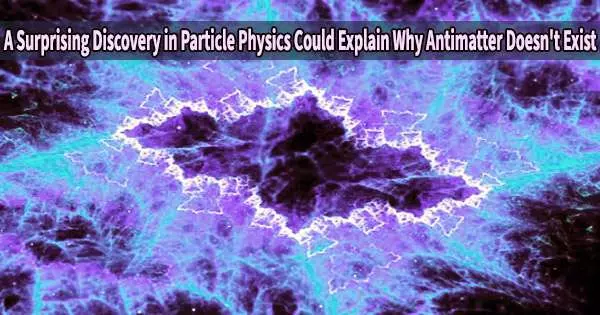Between matter and antimatter, according to the Standard Model of particle physics, there is essentially no distinction. Yet, there is a ton of data showing that the cosmos we can see is entirely formed of matter. If antimatter existed, it would annihilate with adjacent matter tremendous produce extremely high intensity gamma radiation, which hasn’t been seen.
Hence, one of the major unanswered mysteries in particle physics is how we came to have an excess of only matter.
Physics researchers are contemplating ideas that introduce a few more particles in ways that will help to address this and other shortcomings in the Standard Model. One of these models is called the Two Higgs Doublet Model, which, despite the name, actually adds four extra particles.
This model can be made to agree with all particle physics observations made so far, including ones from the Large Hadron Collider at CERN, but it was unclear whether it could also solve the problem of the matter-antimatter imbalance.
Our results showed that it is indeed possible to explain the absence of antimatter and remain in agreement with existing observations.
Dr. David Weir
The research group, led by a University of Helsinki team, set out to tackle the problem from a different angle. Their findings have now been published in a paper in the Physical Review Letters.
About ten picoseconds after the Big Bang right about the time the Higgs boson was turning on the universe was a hot plasma of particles.
“The technique of dimensional reduction lets us replace the theory which describes this hot plasma with a simpler quantum theory with a set of rules that all the particles must follow,” explains Dr. David Weir, the corresponding author of the article.
“It turns out that the heavier, slower-moving particles don’t matter very much when these new rules are imposed, so we end up with a much less complicated theory.”
Computer simulations can then be used to study this idea because they give a clear image of what actually transpired. They can specifically tell us how drastically out of equilibrium the universe was when the Higgs boson became active.
This is crucial for establishing if the Two Higgs Doublet Model could have produced the matter-antimatter asymmetry at this point in the universe’s history.
“Our results showed that it is indeed possible to explain the absence of antimatter and remain in agreement with existing observations,” Dr. Weir remarks.
Importantly, by making use of dimensional reduction, the new approach was completely independent of any previous work in this model.
If the Higgs boson turned on in such a violent way, it would have left echoes. The collisions between the bubbles would have generated a large amount of gravitational waves as the bubbles of the new phase of the cosmos nucleated, much like clouds, and expanded until the universe was like a cloudy sky.
As part of missions like the European LISA project, scientists from the University of Helsinki and other institutions are currently preparing to search for these gravitational waves.
















